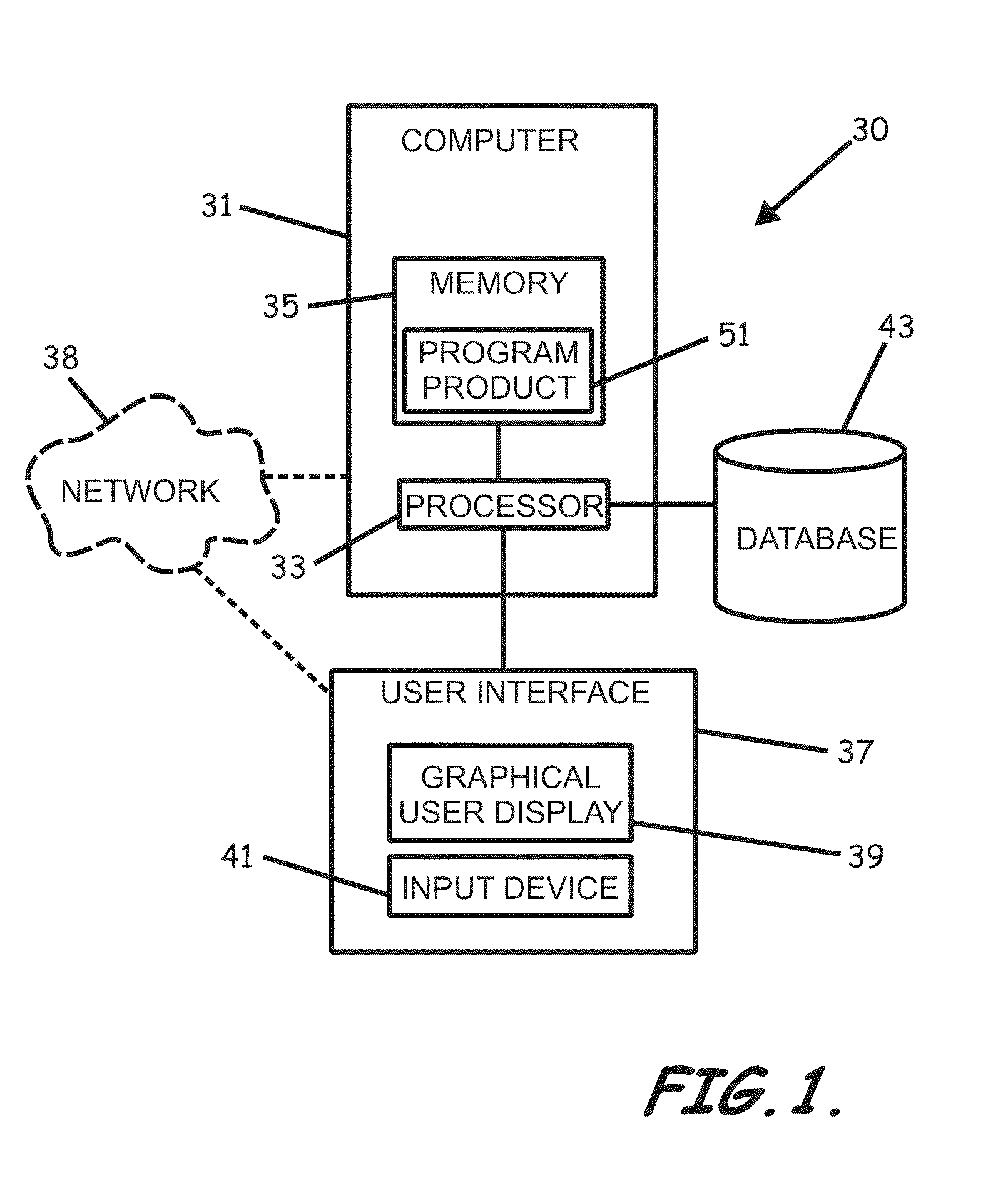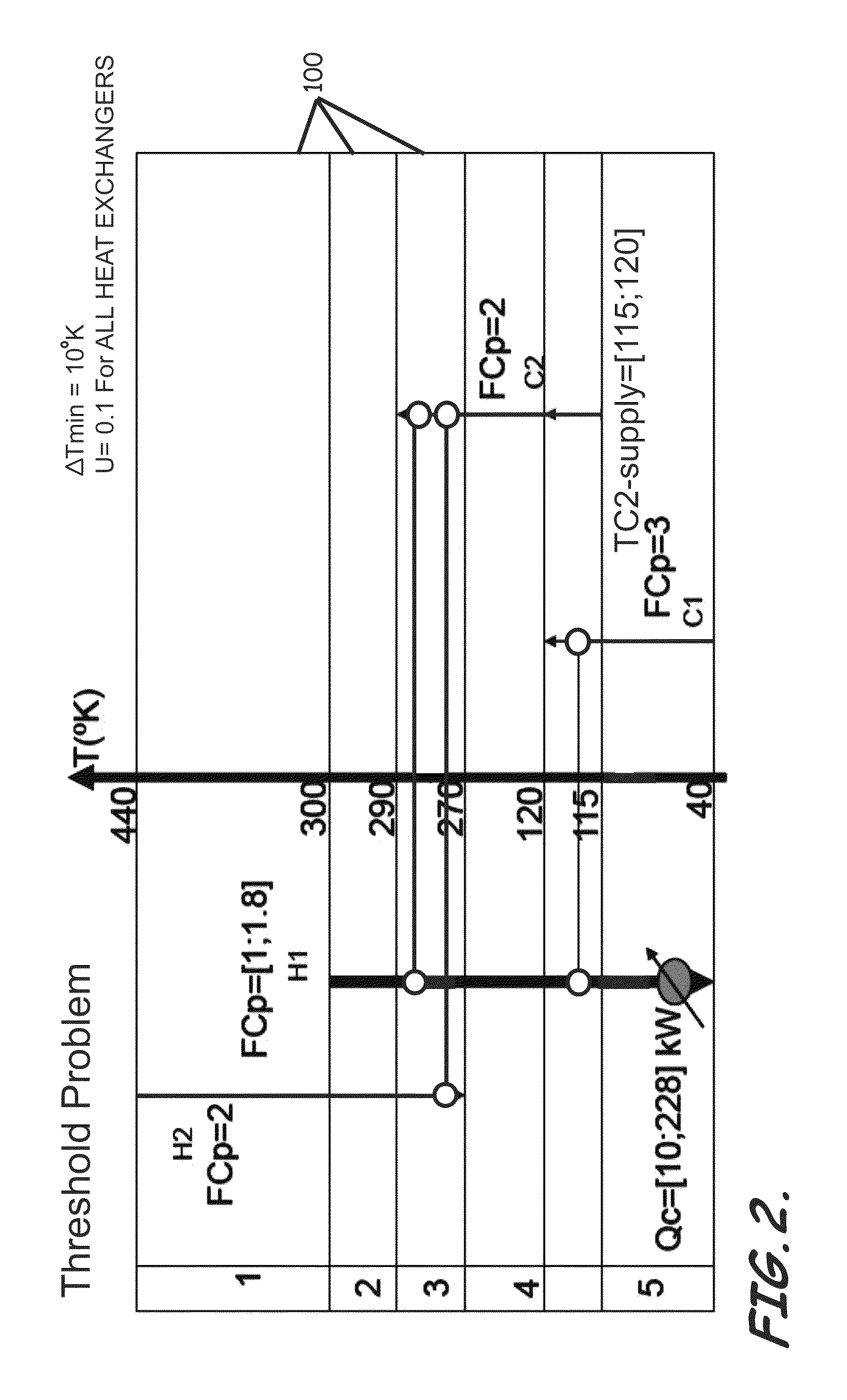Systems, program product, and methods for synthesizing heat exchanger networks that exhibit life-cycle switchability and flexibility under all possible combinations of process variations
a heat exchanger network and life cycle technology, applied in the field of energy recovery systems, can solve the problems of difficult heat exchanger network synthesis, systemic synthesis of heat exchanger network, and is not widely used on a large scale in industrial applications, and achieves easy automation, improved energy efficiency optimization, and change in energy availability and prices.
- Summary
- Abstract
- Description
- Claims
- Application Information
AI Technical Summary
Benefits of technology
Problems solved by technology
Method used
Image
Examples
Embodiment Construction
[0053]The present invention will now be described more fully hereinafter with reference to the accompanying drawings, which illustrate embodiments of the invention. This invention may, however, be embodied in many different forms and should not be construed as limited to the illustrated embodiments set forth herein. Rather, these embodiments are provided so that this disclosure will be thorough and complete, and will fully convey the scope of the invention to those skilled in the art. Like numbers refer to like elements throughout. Prime notation, if used, indicates similar elements in alternative embodiments.
[0054]Many different types of processes consume multiple steam levels and electricity to obtain an output result, or to produce a required product or compound. With large scale processes which consume significant amounts of steam, for example, it is preferable to optimize the steam and power system where possible. Heat exchanger network synthesis for waste heat recovery under a...
PUM
 Login to View More
Login to View More Abstract
Description
Claims
Application Information
 Login to View More
Login to View More - R&D
- Intellectual Property
- Life Sciences
- Materials
- Tech Scout
- Unparalleled Data Quality
- Higher Quality Content
- 60% Fewer Hallucinations
Browse by: Latest US Patents, China's latest patents, Technical Efficacy Thesaurus, Application Domain, Technology Topic, Popular Technical Reports.
© 2025 PatSnap. All rights reserved.Legal|Privacy policy|Modern Slavery Act Transparency Statement|Sitemap|About US| Contact US: help@patsnap.com



